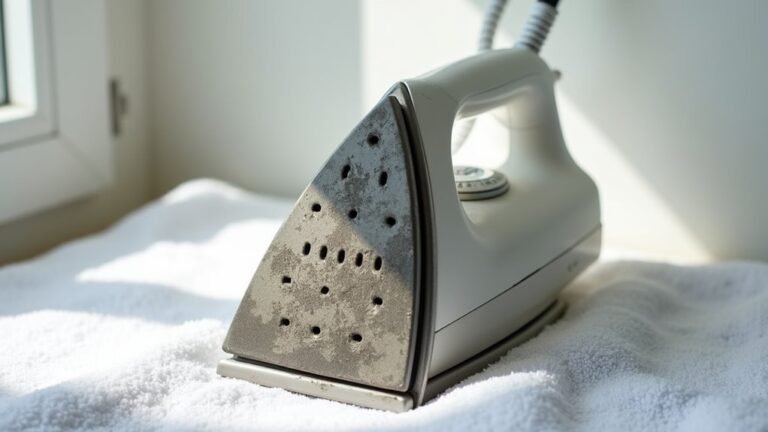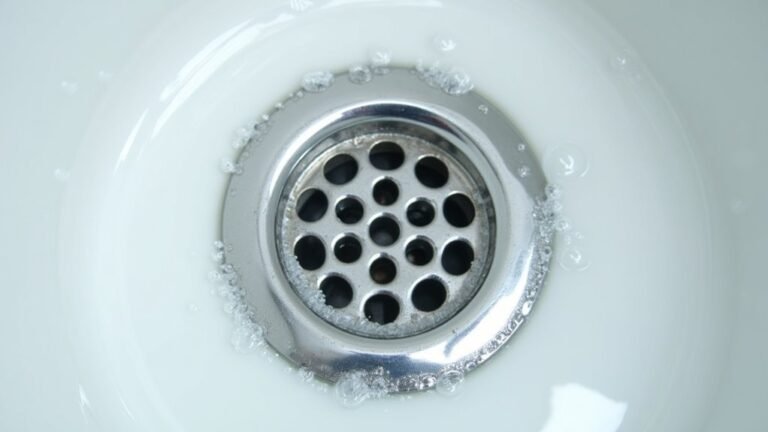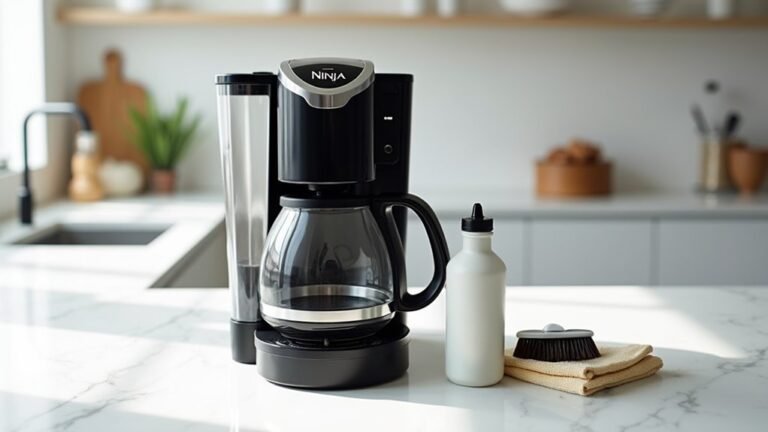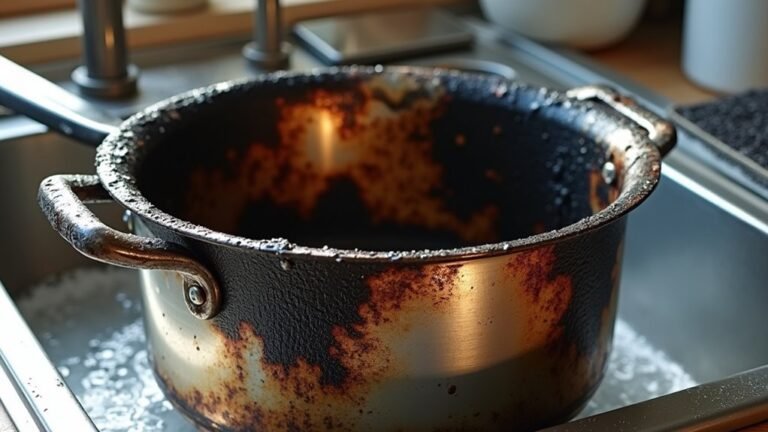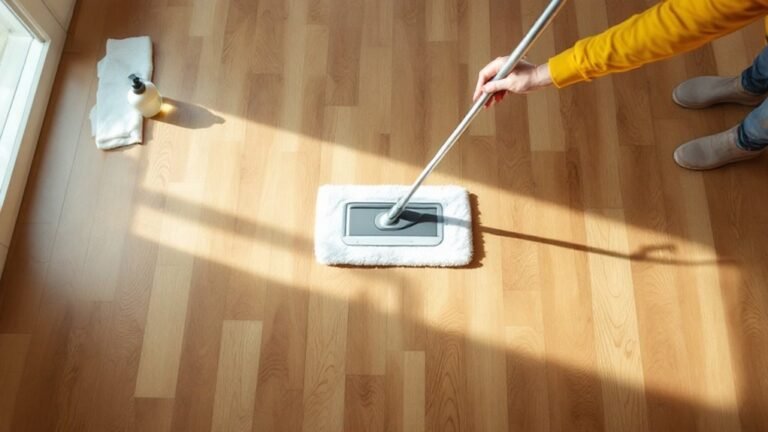A clogged sink drain can ruin your day, just like a traffic jam can slow down your morning commute. We've all dealt with standing water and slow drains that make simple tasks like washing dishes or brushing teeth a real pain. The good news is you don't need to spend money on a plumber right away. With basic tools and some know-how, you can fix most drain problems yourself and keep your sink working well.
Some of the links in this article may be affiliate links. If you make a purchase through these links, we may earn a small commission at no extra cost to you. Thank you.
According to Benjamin Franklin Plumbing, "Most household drain clogs can be cleared with simple tools and regular maintenance, saving homeowners hundreds of dollars in emergency plumbing calls."
Clean Drains, Healthy Home
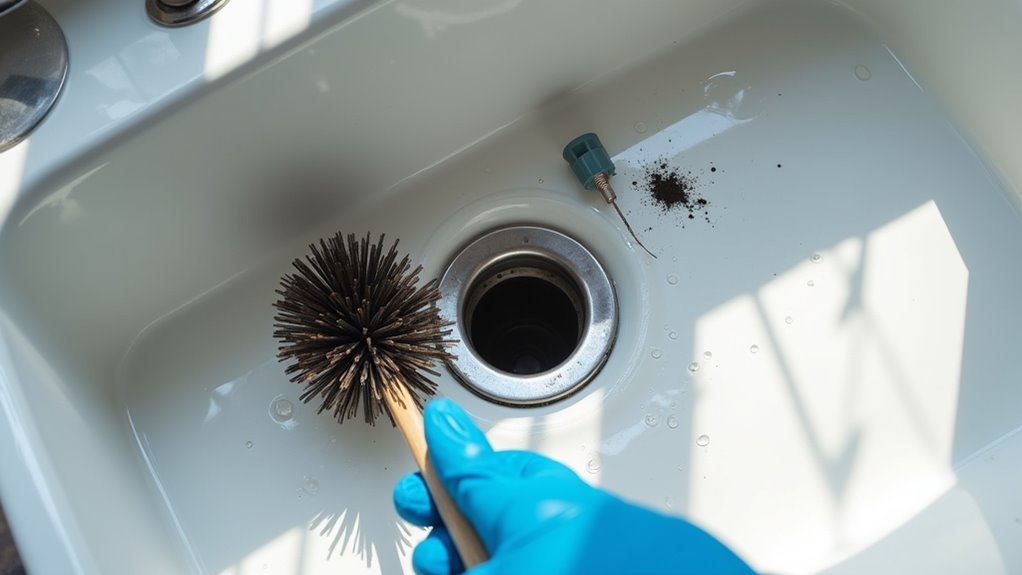
While we often overlook our sink drains in daily cleaning routines, they're actually one of the most important areas to maintain for a healthy home.
##
Let's look at the essential points of sink drain cleaning, including what works best and what to avoid, to keep our plumbing in top shape.
We'll walk through the step-by-step process of using natural cleaners and tools like drain snakes, while steering clear of harsh chemicals that can damage our pipes.
Our goal is to establish a monthly cleaning routine that'll prevent clogs and extend the life of our drains, making maintenance easier in the long run.
Things to Do When Cleaning a Sink Drain
Cleaning a sink drain effectively requires a systematic approach using the right tools and methods to prevent and remove clogs. The process involves gathering essential supplies, accessing the drain interior, removing visible debris, and using appropriate cleaning solutions to dissolve buildup and maintain proper drainage function.
- Gather cleaning supplies – Collect drain snake, dish soap, boiling water, and optional natural cleaners like baking soda and vinegar.
- Remove drain stopper – Unscrew the securing cap and lift out the stopper assembly to access the drain.
- Extract debris – Use a drain zip or modified hanger to pull out hair and other materials blocking the drain.
- Apply cleaning solution – Pour baking soda and vinegar mixture into drain, letting it work for 10-15 minutes.
- Flush with hot water – Pour boiling water down the drain to clear remaining debris and cleaning solution.
- Test drainage – Run tap water to verify proper flow and repeat steps if necessary.
- Clean surrounding area – Wipe sink and drain exterior to maintain overall cleanliness.
- Prevent future clogs – Establish drain maintenance routines and proper usage guidelines for household members.
Things to Avoid When Cleaning a Sink Drain
When maintaining your sink drain, it's essential to understand that certain common practices can actually cause more harm than good.
Poor cleaning habits can lead to severe pipe damage, environmental concerns, and costly repairs that could have been avoided with proper care and attention to appropriate cleaning methods.
- Chemical drain cleaners – Corrosive substances that can erode pipes and harm the environment
- Hair and debris disposal – Brushing hair over the sink leads to stubborn clogs and drainage issues
- Boiling water in plastic pipes – Can cause pipe warping and potentially create leaks or structural damage
- Irregular maintenance – Neglecting monthly cleaning allows buildup to accumulate and form tough blockages
- Non-biodegradable materials – Items like wet wipes, paper towels, or food packaging can create severe blockages
- Excessive force with plungers – Too much pressure can damage pipe joints and seals
- Mixing cleaning products – Different cleaners can create dangerous chemical reactions and toxic fumes
- Metal tools without proper knowledge – Can scratch or puncture pipes when used incorrectly
Steps
Cleaning a sink drain is an essential maintenance task that helps prevent clogs and guarantees proper water flow.
Regular cleaning removes accumulated hair, soap scum, and debris that can cause slow drainage or complete blockages. A thorough cleaning not only resolves current drainage issues but also helps maintain the longevity of your plumbing system.
Step 1: Remove the drain stopper by releasing the spring clamp and unscrewing the cap that holds the rod in place.
Step 2: Insert a modified wire hanger or drain snake into the drain opening.
Step 3: Twist and pull the tool to collect hair, debris, and other buildup from the drain pipe.
Step 4: Remove collected material from the drain cleaning tool and dispose of it in the trash.
Step 5: Pour boiling water down the drain to flush away any remaining debris.
Step 6: Reinstall the drain stopper by inserting the rod and securing it with the cap.
Step 7: Reattach the spring clip to complete the assembly.
Step 8: Run water to test the drain's flow and verify the stopper operates correctly.
Final Thoughts
Maintaining a clean sink drain doesn't have to be complicated or time-consuming.
With regular maintenance using natural solutions like baking soda and white vinegar, we can avoid harmful harsh chemicals while keeping our drains flowing freely.
A monthly cleaning routine with a drain snake, combined with proper disposal habits, will prevent most clogs and extend the life of our plumbing systems.
##
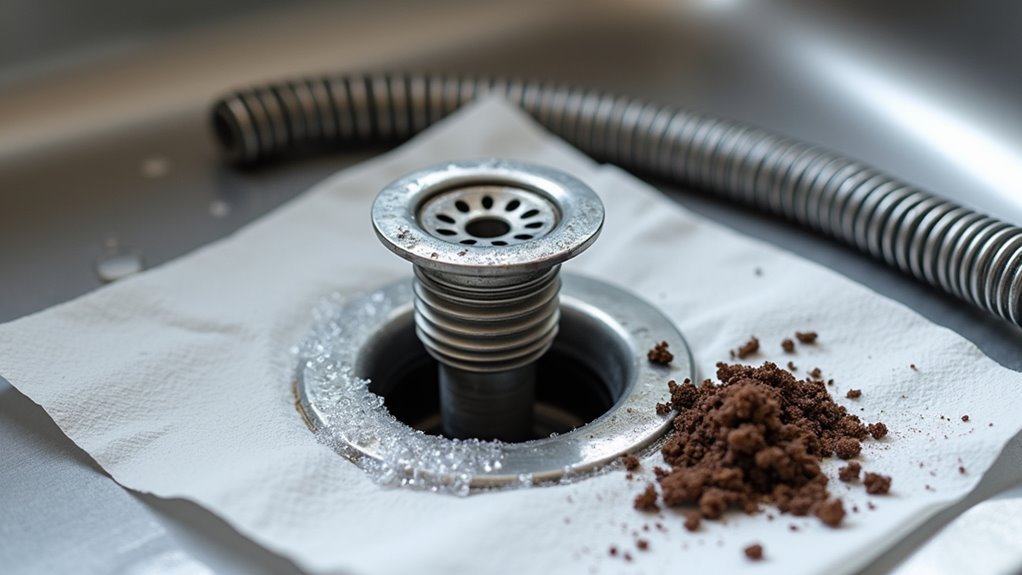
Maintaining a clean sink drain doesn't have to be complicated or expensive. Regular monthly cleaning, combined with natural cleaning methods like baking soda and vinegar, can prevent most serious clogs from developing.
By taking a proactive approach to drain maintenance, you'll avoid costly repairs and the frustration of dealing with backed-up water.
Start implementing these drain cleaning habits today. Set a monthly reminder on your calendar, stock up on basic supplies like baking soda and vinegar, and keep a drain snake handy.
Your plumbing system will thank you, your sink will drain properly, and you'll have peace of mind knowing you're taking care of your home's essential infrastructure the right way.
Remember: a little prevention goes a long way. Take action now to prevent drain problems before they start, and enjoy the benefits of a well-maintained sink drain for years to come.

